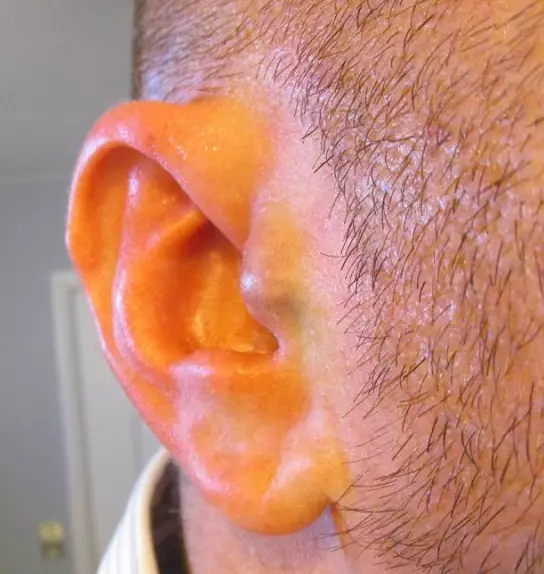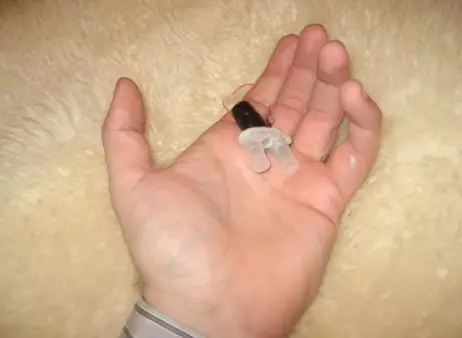
Growing up in the '90s, I'm more than familiar with the term 'cyborg', part-human/part-machine. RoboCop, the Terminator, Darth Vader; there's a whole gang of movie cyborgs and while, for most people, cyborgs are just a part of science fiction, they're actually making their way into science fact via a group of people called biohackers.
Rich Lee is a biohacker in the US. He tells TheLADbible that 'biohacking is a loose term' and that he personally prefers this definition from DIY Bio: 'engaging biology with the hacker ethic'. Biohacking can cover a number of activities, including engineering bacteria, creating an artificial pancreas for diabetics or grinding, like Rich, which sees people putting implants and devices into their body as 'mods' to improve or change how it works.
Advert
So far this sounds like the stuff of every sci-fi film from the '80s, right? But it's actually a growing society. London has its own Biohacking Space, and forums are popping up all over the internet where anyone who fancies it can learn more.

Rich's earphone implants. Credit: Rich Lee
Advert
Rich, 38, said: "As a kid I was sort of waiting for the cyborg and mutant superhuman future to start; that's what I was promised by futurists. I basically got sick of waiting and decided that making it a reality would require me to get involved myself.
"Currently I have two magnets implanted in two different fingertips which allow me to detect magnetic fields in my environment. I have a tiny chip in my forearm for temperature readings, called a bio-therm chip. I have another chip in my hand which is a near field communication (NFC) tag, capable of executing various programmed commands when scanned."
His biggest 'hack' to date is the headphone implants he's had fitted under his skin, which he can use to listen to music or take calls. By hooking his music player up to a loose wire coil around his neck Rich can hear the music playing without blocking out the world.
Let's allow Rich to explain...
Advert
Credit: Rich Lee/YouTube
And for his next biohack...well, Rich puts that in his own words. "The Lovetron9000 is an implant, inserted beneath a man's pubic bone," he says. "Basically it would work like a vibrating cock ring, only implanted.
"The Lovetron9000 was kind of an idea that stemmed from another implant idea I had been working on. Both ideas involved implanting small vibration motors, so it is kind of a project that kills two birds with one stone for me. The device needs an upgrade in vibration strength, so that is something I have an engineer looking into right now."
Advert
Rich doesn't have any fears about implanting the device, apart from the worry that it might feel so good it could lead to premature ejaculation, but he reckons this could be countered by taking a drug like viagra.

An early prototype of the LoveTron9000. Credit: Rich Lee
Advert
So far Rich has had his procedures done by 'body modification specialists' like piercers. Others do a bit of DIY, often filming the experience and uploading it to YouTube. But, honestly, these videos are not for the faint-hearted. I nearly cried.
In Rich's ideal future he will continue to use tech to improve himself in any way possible. He's particularly keen on finding out a way to never have to sleep again, and while this whole area is an ethical minefield, he is very determined to set his own path.
"I do not abide by the restraints imposed by ethics committees who attempt to regulate human enhancement. Their arguments will be obsolete 10 years from now. I want to hack all of it," Rich explained.
Despite this sounding very futuristic, Professor Kevin Warwick from Coventry University has been biohacking himself since Rich was still in high school, albeit in a totally different, more scientific way (that doesn't involve his penis).
Back in 1998 he underwent a small surgical procedure to implant a radio-frequency identification chip into his arm. The chip was linked up to the University of Reading, where he worked at the time, and Kevin, who has since been given the amazing nickname of Captain Cyborg, was able to operate doors, switch on lights and heaters, and turn on computers by snapping his fingers or simply waving his hand.

Kevin after having his implant fitted. Credit: PA
He told TheLADbible: "As soon as we discovered it worked we couldn't stop thinking about what else these chips could be used for. It was really ground-breaking stuff. Perhaps it was done slightly too far ahead of its time, though. People didn't really understand and it all seemed bit too much like something from science fiction."
He and his team didn't let that stop them and Kevin kept on experimenting. In 2002 he underwent two hours of neuro surgery to have a specially-built device fitted straight into his nervous system. Dedication to the job.
This is where it gets pretty technical, and also amazing. The device, which was called BrainGate (you can read more about that here), was made up of more than 100 electrodes and was connected to an external gauntlet that held the supporting electronics. Once installed, Kevin was able to get a separate robot arm to mimic the actions he made with his human arm.

Kevin undergoing his surgery to have the chip fitted. Credit: PA
While at Columbia University in New York, Kevin was able to connect his nervous system to the Internet and control the robot arm, which was back in the UK. And after becoming used to the tech, he was able to 'feel' things that the robot felt.
He said: "If the robot hand was gripping something I could feel a pressure. It felt, almost like having a third arm, my brain adapted to the concept really quickly."
And it gets even more Star Trek. Kevin and his very understanding wife, Irena, then went on to carry out some human-to-human experiments, which Kevin hoped would lay the groundwork for a sort of telepathy, giving people the chance to communicate with each other just by thinking.
Irena was fitted with her own implant - a simpler version of Kevin's - and they were able to communicate via their nervous systems. Although they weren't able to speak to each other, they could send messages.
So, how long do we have to wait until cyborgs are our friends, or even us?
Kevin said: "I think within the next 50 years or so. I mean, even if it takes 100 years, this is the future.
"I think it's definitely becoming more common. I have students who have fitted themselves with magnets; there are people all over the world doing amazing things with it."
Rich says: "This is without a doubt the future. Right now you are seeing the early stages of merging man and machine, so things look a bit clunky and proto. Many of the technologies I'm looking at making and eventually installing right now will be a fraction of their size in the future. Many will be injectable and practically painless to get."
Kevin added: "As technology advances there's nothing stopping us separating our bodies from our brains. Right now we need to be in the same place - body and brain - but as we advance that needn't be the case."
I think that means that my brain can be at work and I can stay in bed, which is as good a reason as any to get behind this.
Featured Image Credit: Rich Lee/Orion PicturesTopics: Science